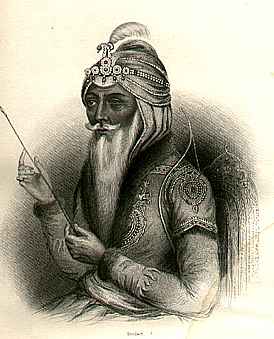
The Maharaja united the Punjab and ruled it for nearly forty years. After his death in 1839, the Sikhs could not find another able leader who could keep the Sikh Raj intact. The following account is of the turbulent times the Sikhs had to face during the wars and eventual defeats.
This excellent article is by Lt. Gen. Kirpal Singh Randhawa, PVSM, AVSM (Retd.) - courtesy of Nishaan.
By sheer force of his personality Maharaja Ranjit Singh, born in 1780, became the unquestioned ruler of the Punjab from 1799 to 1839, his kingdom being the last bastion to hold out against the British-a symbol of their incomplete conquest of India.
Relying on unconventional statecraft and dazzling display of daring and courage, he wielded his warrior nation to extend the Empire from the Sutlej to Kabul in Afghanistan and from Ladakh to Iskardu and Tuklakote in Little Tibet. Every invasion of India till then had been from west to east across the Indus, from 2000 BC onwards, when the Aryans came in. For the first time in history, an Indian, Maharaja Ranjit Singh, went westwards, crossed the Indus River in 1826, going right onto Kabul. The British followed him, but with his assistance. In the south, he acquired the Cis-Sutlej States.
Deciding against an open confrontation with the British, Ranjit Singh chose to enter into the 1809 Treaty with them by which he forfeited his claim to the Cis-Sutlej States, but retained control oyer his existing territories south of the Sutlej, where he had the right to continue policing them with his troops. The British in turn agreed not to interfere north of the Sutlej. Maharaja Ranjit Singh was no fool to sign the Treaty of 1809. He was quite clear about his inability to push his empire across the Sutlej and against the British whose resources were far greater than his own. His future lay westward.
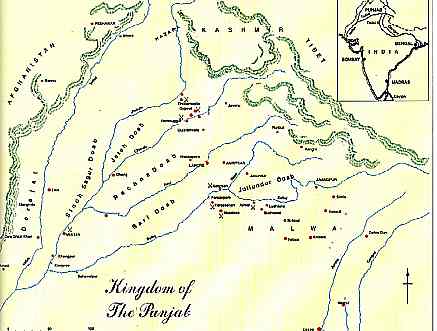
Ranjit Singh avoided going to war with the British at the cost of accepting their protectorate over the Cis-Sutlej territories. This compulsion made him all the more determined to modernise his armed forces along European lines for which he hired a number of European officers, the most notable of these being two former Colonels of Napoleon's Grande Armee, Jean Francois Allard and Jean Baptiste Ventura, who trained and re-organised Ranjit Singh's cavalry and infantry respectively. Ranjit Singh, impressed by the stocky Gurkhas of Hazara District also enlisted them into the Sikh Army The British inherited these from the Sikhs, including their typical rifle-green uniforms which were designed for Ranjit Singh's Army!
The intrigues and the battles for succession
The splendour and greatness of the Sikh Durbar ended with Ranjit Singh's death on 27 June 1839. He left behind seven sons, born of different women but none capable of ruling his Kingdom. Court intrigues, betrayals and assassinations attended his succession and the Army became an uncontrollable and dissatisfied centre of power, eager for war.
The royal family, with no worthy successor to carry on Ranjit Singh's tradition of greatness, the nobles of the Sikh Durbar and the Council of Ministers sensing an opportunity for self aggrandizement began playing Ranjit Singh's family members against one another in a bitter struggle for power
The court intrigues were dominated by two factions, the more influential being the three Dogra brothers, Gulab Singh, Dhyan Singh and Suchet Singh. Dhyan Singh's son Heera Singh, a great favourite of Maharaja Ranjit Singh, came close to becoming a Dogra-Sikh ruler himself. Though not always in accord, one or the other of these Dogras managed to be in effective power at Lahore, allowing their kinsmen to set up an almost independent Dogra principality in Jammu and Kashmir.
The other faction comprised the Sikh aristocracy, such as the Sandhawalia brothers, who resented Dogra influence. Both these factions engaged in a not so subtle power struggle, and used the royal claimants as pawns in their fight for the Sikh Durbar. There were others however whose loyalties were unquestionable like Fakir Azizuddin, Ranjit Singh's able advisor on foreign affairs and the Kashmiri Brahmin Dina Nath who handled revenue and finance.
The war of succession ended in 1845 after Ranjit Singh's youngest son, Dalip Singh, a mere boy, ascended the throne, under Rani Jindan's regency. Despite political instability; the Sikh Sardars and their soldiery undertook noteworthy campaigns, distinguished by their daring and courage. The first of these was into Little Tibet and the second into Afghanistan, to lend a hand to the British to overcome the rebellion of Dost Mohammad.
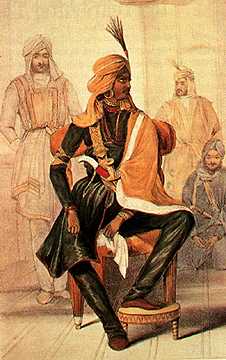
Earlier Campaigns
Earlier, a wedge had been driven into Tibet in 1834 with Gen. Zorawar Singh's annexation of Ladakh. Ranjit Singh forbade a further thrust to avoid conflict with the Chinese Emperor but with no reaction from the Chinese, his son Nau Nihal Singh had permitted Gen. Zorawar to move on and take Iskardu. Gen. Zorawar captured Garo in June 1841 with one column marching eastward along the Kumaon Hills to cut off British contact with Lhasa. Gen. Zorawar then took Tuklakote on 29 August 1841 annihilating the Tibetans. The Sikhs had pierced the heart of Tibet, going right up to Rudok.
The British protest to the Lahore Durbar was politely warded off. While these exchanges were going on the Chinese mustered their armies to defend Lhasa and isolated Zorawar Singh and his men at 12000 feet in bitter cold and in desperate straits. The Sikh Army, hungry and cold, tried to fight its way out but the gallant Zorawar fell on 12 December 1841 and his men were butchered in cold blood after they had laid down arms on Chinese assurances of being permitted to return unmolested. The Chinese reoccupied their Tibetan possession however with Leh still flying the Sikh Flag.
By the spring of 1842, Sikh reinforcements reached Leh, and forced the Chinese to retreat and they reoccupied Ladakh. The column heading for Garo reached the boundary in August 1841 while another encircled a Chinese force sent from Lhasa and decimated it, taking the Chinese Commander prisoner. The Sikhs had made up for their winter defeat but learnt a lesson as well: campaigning in winter in this region was tough. On 17 October 1842 the Durbar Envoy signed a Treaty with the representative of the Chinese Emperor at Lhasa, making the boundaries of Ladakh and Tibet inviolable but open to trade.
In the meanwhile, common British-Sikh interests in Afghanistan made Sher Singh, another son of Ranjit Singh, order Gen. Avitabile to move from Peshawar to the relief of the British. The Sikh troops recaptured Ah Masjid beyond the Khyber and relieved Jalalabad.
Amir Dost Mohammad was given Kabul's throne.
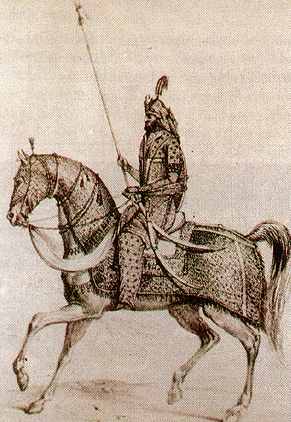
The First Sikh War
The First Sikh War between the Lahore Durbar and the British was marred by the treachery of a few influential figures of the Durbar, but the battles fought are a testimony to the bravery, fighting skills and sense of sacrifice of the Sikh soldiery. In successive battles their heroism in the field stood out and despite the odds against them they came close to shattering British supremacy in Northern India.
The British, wanting to fish in the troubled waters of the Punjab, had increased their force from 17,000 to 40,000 men by the autumn of 1845. A stormy meeting of the Durbar on 17 November 1845 took note of British intentions of aggression. Their army, poised on the frontier, waited for the Governor General and the Commander-in-Chief to cross the pontoon bridge on the Sutlej.
The Durbar, preparing to resist, divided the army into seven divisions of eight to twelve thousand men each. Four were ordered to proceed against the British advance positions at Ropar, Ludhiana, Harike and Ferozepur, one each to man the North Western Frontier at Peshawar and Attock and in the south along the Sindhu. One was kept in reserve at Lahore.
The British asked for an explanation of these troop movements and were clearly told that they were meant to counter British preparations. Further, the Durbar sought the return of Suchet Singh Dogra's treasure, which was enormous, in fact cart-loads, which the British had appropriated. They also reiterated their right, often denied in practice, to free passage for the Punjab Armed Constabulary to the Durbar's possessions across the Sutlej.
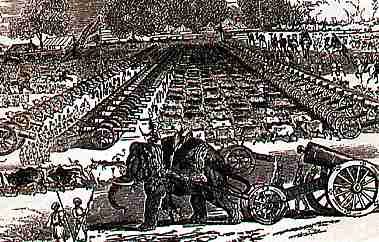
The British rejected the Durbar's contention and severed diplomatic relations. The two States were close to war, and the call to arms was out. Chiefs and peasants left their homes to join the forces. According to the bard Shah Mohammad: "Sons of Sardars, handsome, dashing, debonair leapt to battle as Lions leap out of their lair"
Crossing the Sutlej
The stage was set. The Sikh Army crossed the Sutlej between Harike and Kasur on 11 December 1845, its aim being to cut off Gen. Littler's force at Ferozepur from the British forces advancing from Ludhiana and Ambala under Lord Gough and Lord Hardinge. The act of crossing the Sutlej remains as debatable a point today as it was then. It centres around whether the Durbar troops had crossed over into their own territory or was the crossing tantamount to a violation of the treaty of 1809 and consequently amounted to an act of war.
On December 13, Lord Hardinge declared war, accusing the Sikhs of invading British territories "without a shadow of provocation."
Treachery
The Sikh Army, consisting of five divisions numbering 50,000 men and 108 guns was assembled on the right bank of the Sutlej. They were to invest Ferozepur, where Maj. Gen. Littler was caught unawares with 7500 men and 35 heavy guns. Two divisions under the command of Lal Singh, a Brahmin from the Gandhara Valley and the Sikh Army C-in-C, took position at Ferozeshahr village/ ten miles above, to intercept the main British Army marching from Ambala to relieve Ferozepur. The other commander was Tej Singh, again neither a Sikh nor a Punjabi, nor true to his adopted country, which was Ranjit Singh's Punjab. He was a Gour Brahmin from Sardhana, Meerut, and had been placed in the position in 1845 during the infant Dalip Singh's rule. Before moving onto Ferozepur - as he should have done - Tej Singh secretly informed the British Agent at Ferozepur, John Nicholson: "I have crossed with the Sikh Army. You know my friendship with the British. Tell me what to do?" Nicholson advised him not to attack Ferozepur and "to halt as many days as you can and then march towards the Governor General".
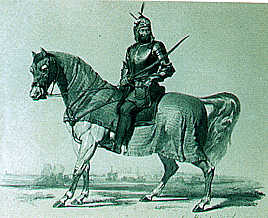
Battle of Mudki
True to his promise, Tej Singh encircled Ferozepur in a bold sweeping move, but did not attack. His retort to the impatient Sikh soldiers was that his status and dignity demanded that he only engage with the Governor General himself, implying that anybody below that rank would be a slight to his position. The British C-in-C and the Governor General arrived at Mudki, twenty miles from Ferozepur. There they were met by the smaller Sikh detachment under Lal Singh who commenced the attack but in accordance with his original design quickly deserted command leaving his soldiers to fight the British. Unable to stand up to the superior numbers of Gough's infantry the Sikhs nevertheless offered stubborn resistance but lost the battle and were compelled to withdraw.
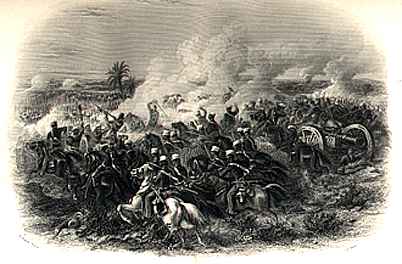
The action at Mudki though not significant militarily gave the British their first experience of the fighting qualities of Sikh soldiers. British casualties were heavy and they required reinforcements from Ambala, Meerut and Delhi. Lord Hardinge voluntarily joined the C-in-C as his second-in-command. Tej Singh with his now numerical superiority was supposed to take Ferozepur after overwhelming Gen. Littler, a task not too difficult. Instead he deliberately allowed Gen. Littler to slip out and join forces with Gen. Gough and Lord Hardinge at Ferozeshahr.
The Battle of Ferozeshahr
After the Mudki setback the Sikhs moved to and entrenched themselves around the village of Ferozeshahr, ten miles from Mudki. Sir John Littler who had affected a junction with the main body of the British Army four miles from the Sikh entrenchment, now decided upon an immediate attack.
The British artillery mounted a steady barrage of fire followed by an infantry attack, gaining a foothold in the Sikh entrenchment. The Sikh infantry drawn up behind its artillery guns retaliated with fierce musketry fire and the British were hurled back with heavy losses. The next British charge succeeded in wresting advantage from the Sikhs, the contest continuing with greater determination throughout the night earning it the appellation "night of terror". The position of the British grew graver as the night wore on.
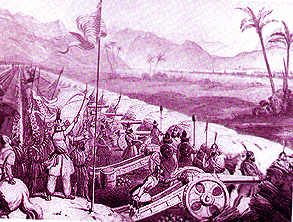
An entry in Robert Cust's diary reveals that the generals had decided to lay down arms: "News came from the Governor General that our attack of yesterday failed, that affairs were desperate, all state papers were be destroyed, and that if the morning attack failed would be over; this was kept secret by Mr. Currie and we were considering measures to make an unconditional surrender to save the wounded..."
However in the morning, the Sikh soldiers were again betrayed by their leaders. First Lal Singh fled battlefield. Then Tej Singh with a large force from the Sutlej did not even attempt to repulse the British. Having exhausted their men and munitions the British had neither fight in them nor were they a match for the Sikhs. Treacherously, after firing a few rounds Tej Singh retreated He had intentionally delayed his arrival and not appeared on the scene till he had seen Lal Singh's forces dispersed.
The battle of Aliwal, north-eastward of Ferozeshahr, on 29 January 1846 was more of an extended skirmish against mostly Dogra irregulars and a prelude to the action at Sabraon two weeks later.
Battle of Sabraon
On the left bank of the Sutlej at Sabraon the Sikh Army had established itself in a strong position. The British decided to delay the attack until they had received reinforcements from Delhi. It was again typical that Tej Singh did not make a move to capture the stores on which the British were relying to win the war. This despite the fact that the Sikh Army was 37,000 strong, with 67 guns, compared to the British force of a mere 15,000 men.
The British massed their heavy artillery on commanding positions opposite the Sikh entrenchment, which were under the command of Tej Singh. The fire spread death and destruction and though the Sikhs continued to fend the attack the British soon began closing in on them. After a keen contest over every inch of ground, Sabraon was lost.
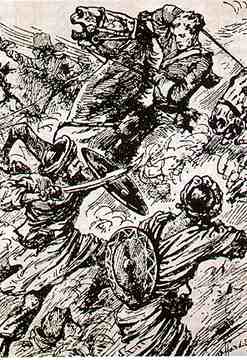
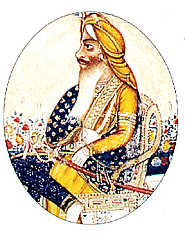
Once again Tej Singh deserted the army and even cut the boat bridge which linked the Sikh forces to the opposite bank of the river leaving them to perish under deadly showers of shrapnel as they tried to swim across.
Describing the battle at Sabraon as the "Waterloo of India", Lord Gough paid great tribute to the Sikh soldier: A Policy precluded me from publicly recording my sentiments on the splendid gallantry of our' fallen foe, or to record the acts of heroism displayed not only individually, but almost collectively, by the Sikh Sirdars and the Army. and I declare, were it not for a deep conviction that my country's good required the sacrifice, I would have wept to have witnessed the fearful slaughter of so devoted a body of men." General Sir Joseph Thackwell who witnessed the battles wrote, "for though defeated and broken, they never ran, but fought with their talwars to the last and I witnessed several acts of great bravery in their sirdars and men". Lord Hardinge, who saw the action, wrote, "Few escaped, none it may be said, surrendered. The Sikhs met their fate with the resignation which distinguishes their race." This was a major British victory against a people afflicted with internal treachery and treason and was the beginning of the end of the Great Sikh Durbar.
The British Governor General of India, Sir Henry Hardinge laid down stiff terms, including cession of the districts of Kashmir and Hazara. Within hours, Gulab Singh Dogra accepted the conditions and so ended, nominally, the First Anglo-Sikh War.
The traitors Lal Singh and Tej Singh were "immortalised" in doggerel verse, to quote a historian punning on their names: Laloo lost the blush of shame, Teju lost his lustre, By turning their backs in the field They turned the tide and the battle yield.
The Second Sikh War
As British Regiments were now garrisoned in Lahore, it was obvious the conspirators had succeeded in their aims. The Sikh Army was disbanded and a convention entered into for the administration of the Government by a Council at Lahore under a British Superintendent during the minority of Dalip Singh, the youngest of Ranjit Singh's sons. The country between the Beas and Sutlej, comprising the districts of Jullundur, Hoshiarpur and Kangra, was transferred to the British. Retaining suzerainty, they sold the valley of Kashmir to Raja Gulab Singh Dogra for a paltry five million rupees.
The disgusted Sikh soldiers, whose regiments had been disbanded, realised the extent of their betrayal, and the feeling of revenge mounted. The sense of outrage of the disbanded Sikh troops and patriots was to be the root cause of the Second Anglo-Sikh War. In the forthcoming battle of Chillianwala the Sikhs, now under able and upright commanders repaid the debts they owed and this time treachery did not quite work for the British.
In the British view there was to be no war in the next decade. Lord Hardinge, the British Governor General had ordered a reduction in the army but as subsequent events proved, this belief was ill conceived. The first to challenge British domination was Diwan Mulraj, the Sikh Durbar's Governor of Multan and Sardar Chattar Singh Attariwala at Hazara. Chattar Singh's son Sher Singh Attariwala followed his father's example and also threw his forces against the British.
On hearing of Lord Gough's advance on Lahore, Sher Singh Attariwala in a tactical move, sent covering troops through the fords towards the river's left bank, for delaying the enemy's advance and sending early waming. To cover this maneuver, Sher Singh deployed heavy artillery on the left bank of the Chenab: a stratagem which was overlooked by Lord Gough as he led the British advance party to attack the troops of the Sikh advance guard who were now retreating on Sher Singh's orders. The British came under fire of the Sikh guns on the right- bank and it soon became evident that the British position had become untenable. Under cover of their artillery the Sikh infantry and cavalry carried the day. The Sikhs captured British guns and the colours of a British regiment, this victory at Ramnagar giving a much-needed boost to their morale.
Stunned by the defeat, Lord Dalhousie took the initiative in his own hands and directed his General Staff to prepare a blanket attack on the Sikhs before they could strengthen their positions. The main action plan of the British was to prevent a union of Chattar Singh's army from Attock and that of Sher Singh's. However, in the meantime the British had defeated Mulraj at Multan and felt adequately rejuvenated to face the now united army of Chattar Singh and Sher Singh Attariwala.
Battle of Chillianwala
In an amazing coincidence, the battle of Chillianwala was fought in almost the same area where Porus, with his elephants, chariots, and archers, had fought Alexander's cavalry 2175 years earlier.
Sher Singh displayed exceptional skill by judiciously selecting his position which was protected on the left by a low ridge of hills intersected with ravines and the main stream of the Jhelum, the right being posted in different villages enclosed by a thick jungle.
On 13 January 1849 the British launched their attack. Their artillery advanced to an open space in front of the village of Chillianwala and opened fire on the Sikh artillery. The Sikhs replied with a vigorous cannonade. As the fire ceased the British drew up in order of battle and charged at the enemy's centre in an attempt to force the Sikhs into the river. The assault was led by Brigadier Pennycuick. For the Sikhs, the conditions were made to order. Scattering into the brushwood jungle they began their hit and run tactics, their snipers taking a heavy toll of the British cavalry and infantry. Those that got through the brushwood and the ravines were easily repulsed in the hand-to-hand fighting with the main body of the Sikh troops.
Brig. Pennycuick leading the Brigade in the front fell as did his son Ensign Pennycuick who was mortally injured while trying to protect the body of his father. Four British guns and the colours of three British Regiments fell to the Sikhs and the British registered nearly 3000 dead or wounded in the area around Chillianwala. A testimony left by a British observer says: "The Sikhs fought like devils, fierce and untamed... Such a mass of men I never set eyes on and as plucky as lions: they ran right on the bayonets and struck their assailants when they were transfixed".
But, once again, as at Ferozeshahr, the Sikhs failed to drive home their advantage. Having suffered considerable losses themselves they were not aware of the magnitude of the punishment they had inflicted on the British. It then poured incessantly for three days - which kept the Sikhs separated from their quarry - and on the fourth day as the sun shone again, the British had pulled out and retreated across the Chaj to the banks of the Chenab.
The Attariwalas sent George Lawrence, who was their prisoner, with terms for a truce, which included the investment of Dalip Singh as Maharaja. This, however, the British did not accept.
Once more, fate and destiny had conspired against a victory for the Sikhs, bringing to mind Shah Mohammad's words:
"We won the Battle but we lost the Fight."
The Battle of Chillianwala

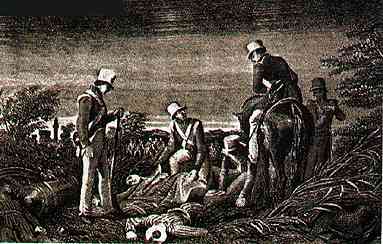
The Finale- Battle of Gujarat, 21 February 1849
The Attariwalas then advanced towards the Chenab and entrenched their forces between Gujarat and the river. However by now they had only 59 guns to the 66 of the British and far less manpower. They repeated their mistake by firing too soon, betraying their positions and exhausting their ammunition. The British launched a cavalry and infantry charge, which could not be contained by the Afghan cavalry, which had reinforced the Sikhs.
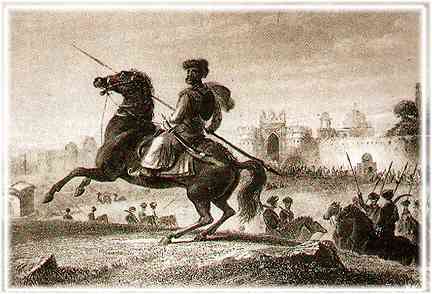
Sheer numbers finally decided the issue. The Sikhs gave way and the Attariwalas finally surrendered their army and their swords near Rawalpindi, completing the end of the Sikh Durbar.
In the maze of all the machinations that went into the terms of the surrender, Maharaja Dalip Singh was made to hand over the legendary Kohinoor and step down from his illustrious father's throne, never to sit on it again. As a veteran summed it up: "Aaj Ranjit Singh mar gaya". "Today Ranjit Singh has died."
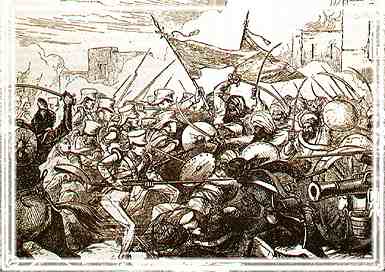
Spirit of the Khalsa
However, from the ashes and dust rose a proud nation whose gallantry and steadfastness against fearful odds soon filled the ranks of the new Indian Army, first pursuing British interests and then Independent India's a century later. As always, they had proved their loyalty and gallantry to the salt they swore by, being bestowed more gallantry awards than any other peoples in the region.
It is in the destiny of the Sikhs to face tribulations time and again and to rise and be resurrected even stronger. This is the spirit, which gave birth to the Khalsa and made warriors out of people who never let themselves down.
They fought the British to the bitter end but having handed over their swords like the soldiers of yore they became Britain's foremost troops winning more Victoria Crosses than any other people. They made military history when twenty-one of them, from one single unit (the 36th Sikhs), in a single day, received the highest military decoration that Britain could bestow on soldiers of the Indian Army. This was on 12 September 1897 at Saragarhi, a feat of gallantry and sacrifice nsurpassed in the annals of military history.
To this day their erstwhile foes, the Pathans faithfully maintain the Saragarhi Monument in Pakistan's North-West Frontier Province, a tribute to their then foes, the 21 Sikh heroes. Then came the struggle for India's Independence. With less than two per cent of the population, no other people willingly gave their lives and sacrificed so much as did the Sikhs, whether at Jallianwala Bagh, the conspiracy cases, the Koma Gata Maru episode or banishment to the Andaman Islands. In the same vein, it was the destiny of a great unit, the 14th (Ferozepur) Sikhs to be landed straight into battle in Srinagar in October 1947, to stem the tide and uphold India's right and so save Kashmir. It must have given great pride to the spirit of Ranjit Singh that his soldiery, which ultimately formed the Sikh and Punjab Regiments, have won more laurels in battle than any other segment of the Indian Army.
Destiny continues to pursue the Sikhs even in the late twentieth century, in the same manner as it did their forefathers. They have risen from the desecrated temple of their Gods, the holiest of the holy, the Golden Temple, assaulted by a modern army with tanks and artillery. They have also risen from the ashes of their brethren whose corpses littered the streets of India's capital Delhi, all of this as recently as 1984.
A difficult people to understand-and not everyone understood them-led a seasoned British Commanding Officer of the Sikhs to write a small introduction for newly commissioned British Officers assigned to Sikh units in India, "There cannot be a more horrendous people when honour is at stake. Yet! Put your arms around the man and hug him like a brother and apologise. Before you have finished, he has melted like butter in the hot sun and is ready to take on the world for you." Ranjit Singh is no more but the spirit of the Khalsa continues to live, not only in the battlefields of valour, but in the ability of these people to reach the highest levels of excellence in every sphere, all over the world.
Sources of the illustrations in this article are The Illustrated London News, The Journal of the Society for Army Historical Research, and The Fateh Foundation.
